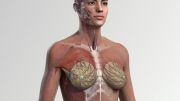The growing adoption of biometric authentication in mobile health devices transforms how patients and health care providers access and secure sensitive medical information. However, it brings specific risks health care organizations can’t ignore.
These cases can have severe implications for patient confidentiality and the overall integrity of health care systems. As such, IT teams must stay vigilant and proactive in identifying and addressing these vulnerabilities to ensure the benefits of biometric authentication.
1. Spoofing and Presentation Attacks
Attackers are increasingly adept at using fake fingerprints, photos and other methods to deceive biometric systems, particularly those embedded in less sophisticated mobile health devices. With 55% of consumers now relying on biometric authentication factors like fingerprints or face scans to unlock their devices, the stakes for security have never been higher.
Advanced spoofing techniques such as creating high-quality molds of fingerprints or using high-resolution images to mimic facial features can trick these systems into granting unauthorized access. Unfortunately, current biometric sensors often struggle to detect these sophisticated forgeries, especially when they have advanced security features.
Health care IT professionals must implement liveliness detection to mitigate these risks and verify the biometric input is from a living person. Similarly, continuous authentication monitors user behavior to detect anomalies and ensure biometric systems are regularly updated to address emerging threats.
2. Systemic Vulnerabilities and Attack Vectors
Vulnerabilities in the software, firmware and hardware of mobile health devices present risks hackers can exploit to bypass biometric authentication. These weaknesses create entry points for threats such as side-channel attacks, where hackers analyze physical emissions like power consumption or electromagnetic leaks to extract biometric data or encryption keys.
Additionally, specialized malware can target and compromise the biometric systems in these devices, altering their functions or directly capturing sensitive data. These threats highlight the critical need for health care IT programs to engage in regular patching and rigorous testing of all components in biometric authentication.
Collaboration with cybersecurity experts is essential to stay ahead of emerging threats and ensure organizations identify and mitigate vulnerabilities. Maintaining a proactive stance on security allows health care providers to protect their systems and patient data from these sophisticated attacks.
3. Biometric Data Breaches
Unlike passwords, biometric data is immutable. Users can’t change it once it has been compromised, which poses a significant risk in cybersecurity. Security researchers have demonstrated that it’s possible to steal biometric data and reuse it for unauthorized access across different platforms.
This is particularly alarming in the context of health care data. Exposing biometric information could lead to severe privacy breaches, identity theft and the potential misuse of sensitive medical records. Implementing robust encryption methods to protect biometric data during transmission and storage is crucial.
Additionally, secure storage solutions preventing unauthorized access and multi-factor authentication can add protection. They ensure that even if biometric data is compromised, it can’t be easily exploited.
4. Privacy Concerns and Data Misuse
The potential for misuse of biometric data extends beyond simple breaches. It encompasses unauthorized sharing, government surveillance and significant ethical concerns. For instance, perpetrators can hack into biometric fingerprint scanners and use Telnet connections or default credentials to access physical and digital assets. This endangers individuals’ privacy and leads to legal complications and unwarranted surveillance.
Regulations like GDPR and HIPAA enforce strict guidelines on the handling and protecting of biometric data. They emphasize the importance of compliance with patient privacy.
Health care IT professionals must also adopt privacy-enhancing technologies and establish clear data usage policies to prevent misuse and protect patient data. These measures maintain trust in biometric systems and ensure their implementation doesn’t compromise individual privacy and ethical standards.
5. Replay Attacks
Attackers can exploit weak data transmission protocols by intercepting and replaying biometric data captured during authentication processes, mainly when the data is not securely encrypted. In a replay attack, cybercriminals capture biometric data as it moves between a mobile health device and a server.
They then replay this data to gain unauthorized access, bypassing the authentication system entirely. This type of attack is especially concerning for mobile health devices, where the integrity and security of patient data are critical. In fact, authorities received 720 data breach reports involving over 500 records in 2022, highlighting the growing vulnerability of sensitive information.
Health care IT professionals must implement secure communication protocols such as transport layer security and utilize advanced cryptographic techniques to ensure biometric data remains secure during transmission. These measures safeguard against the potential exploitation of biometric systems in mobile health devices.
Staying Ahead in Biometric Security
Health care IT teams must remain vigilant by staying informed about emerging threats and investing in robust security measures to protect their biometric systems. Continuously assessing and updating these systems safeguard patient data in an evolving cybersecurity landscape. Balancing the drive for innovation and protecting sensitive information maintains trust and ensures the integrity of health care services.
By Zac Amos, rehack.com





